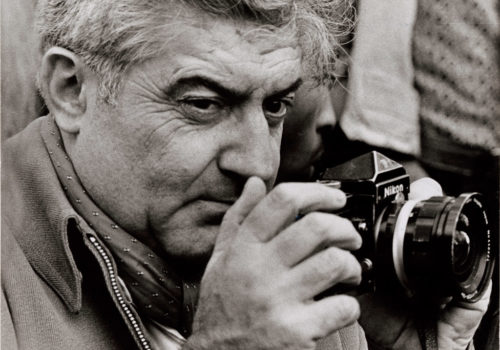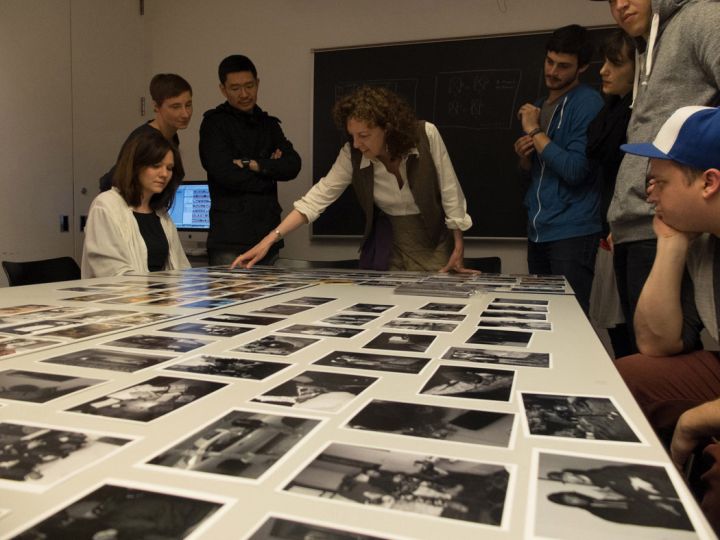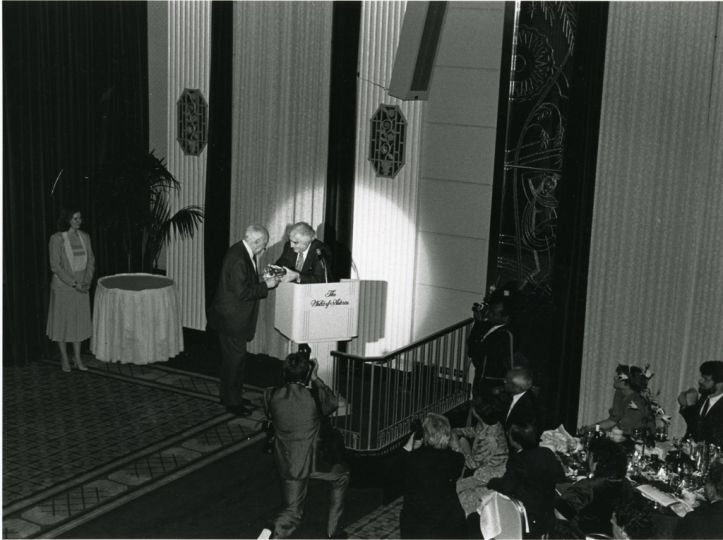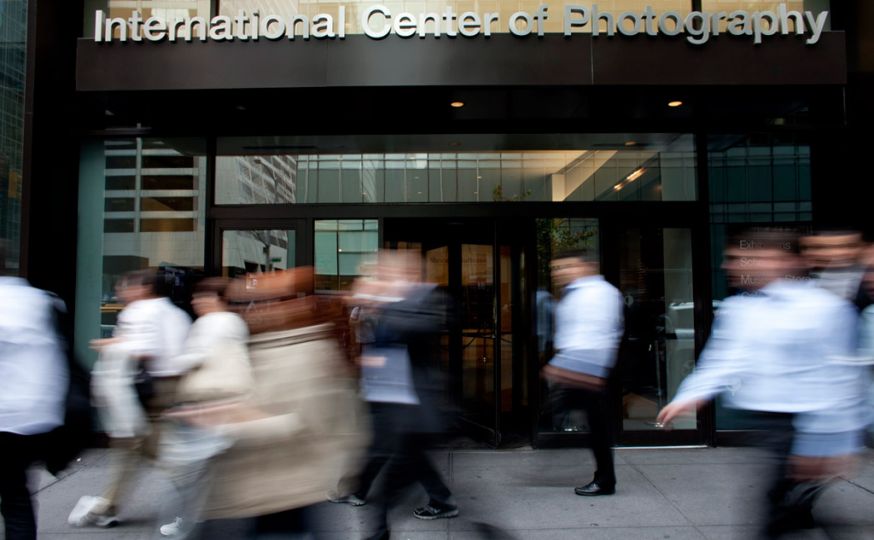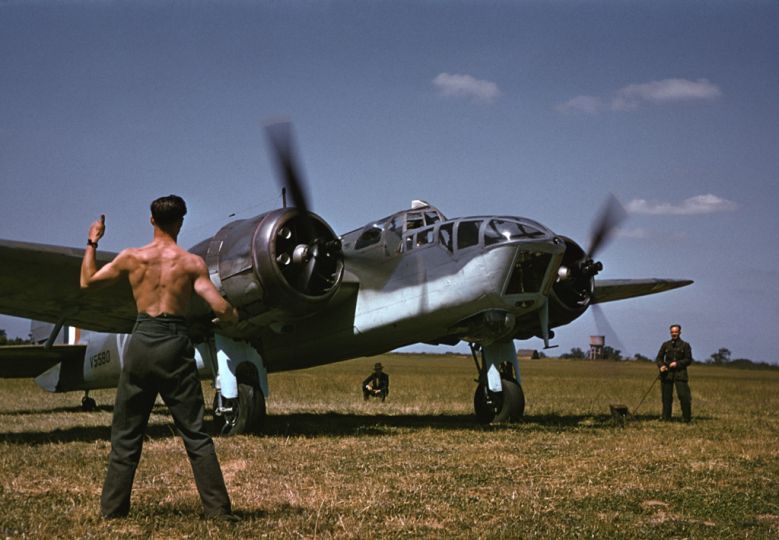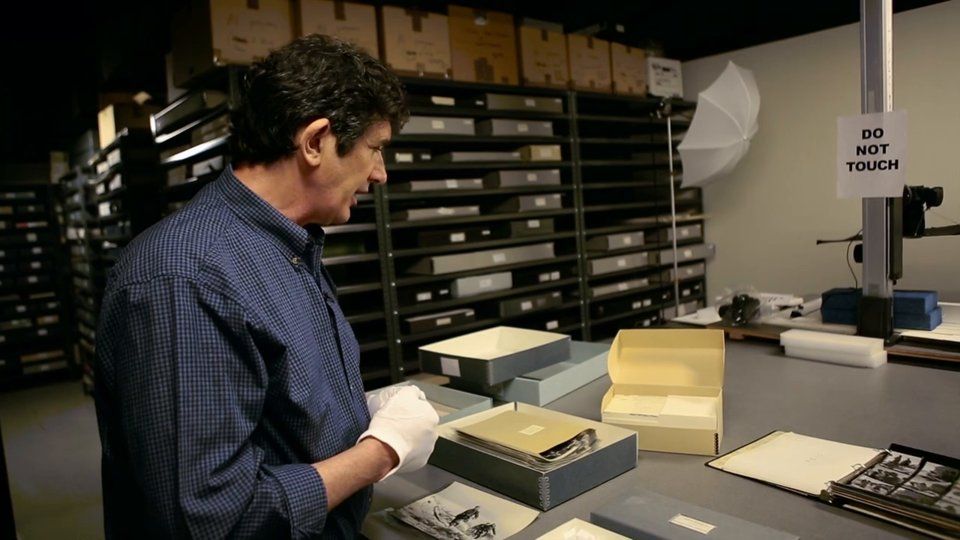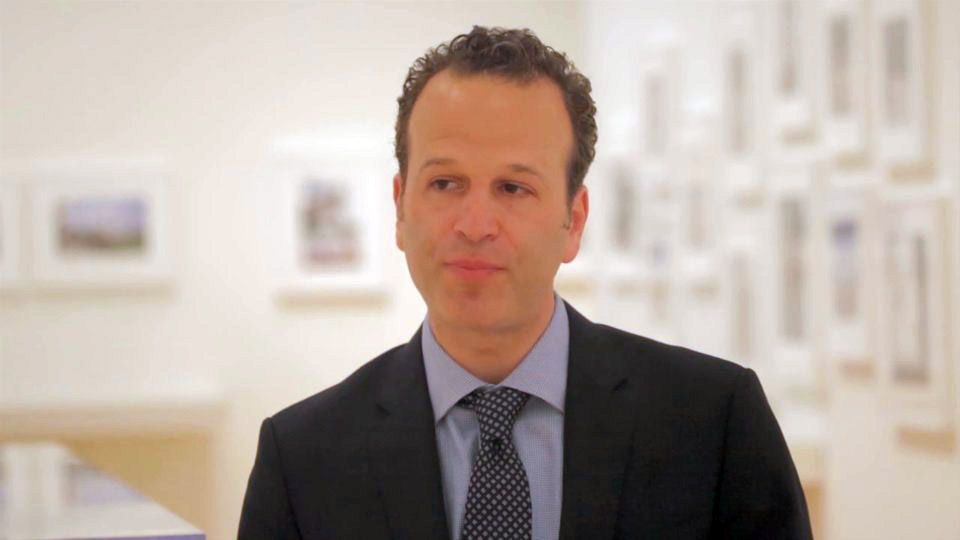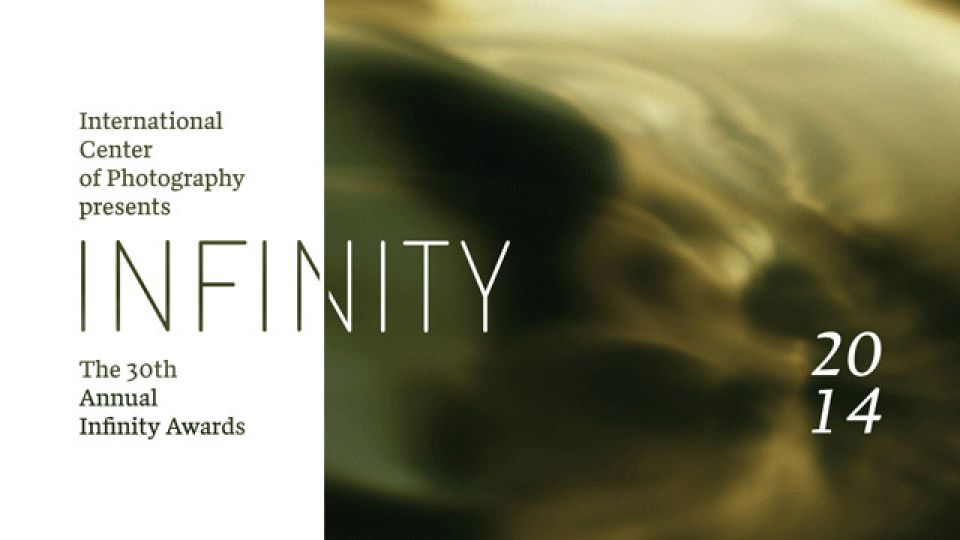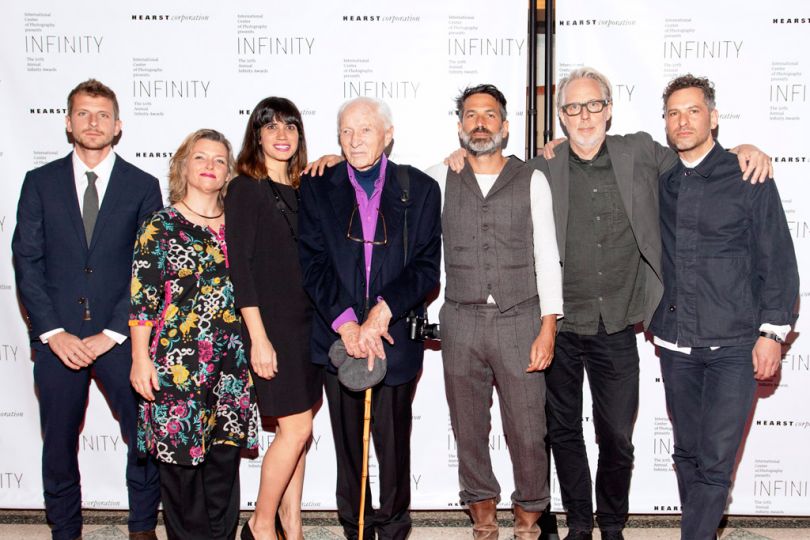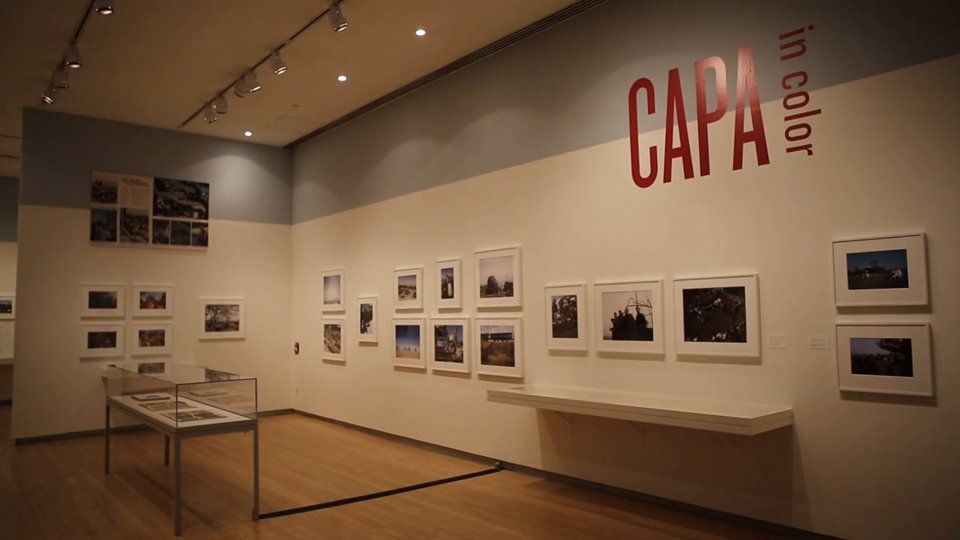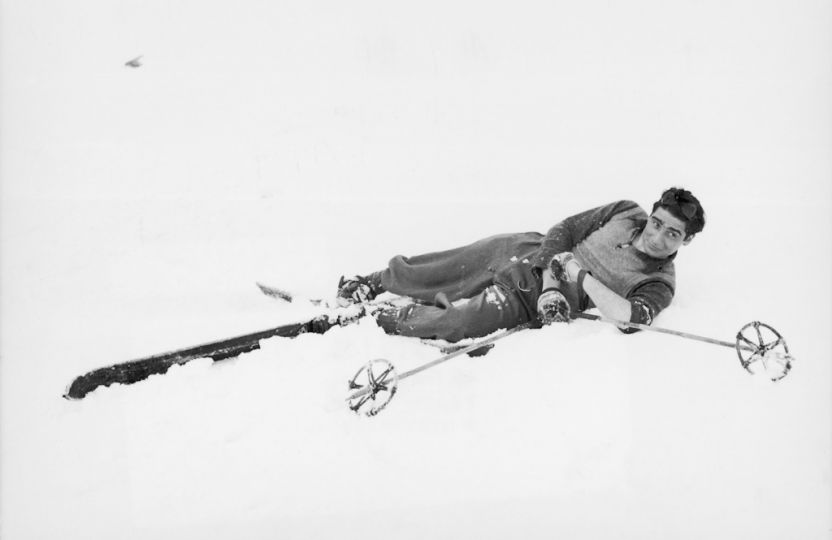My first memory of Cornell was during the summer of 1996, which I spent in New York as an editorial intern. He was like a grandfather to me, doling out cash and wisdom to take with me on my road as an emerging writer and photographer. I remember so clearly our Chinese dinners with his sweet wife, Edie. He said to me, “Life is rich.” It was a simple statement, but somehow he embodied its meaning. Cornell was soulful, passionate, generous, committed and vital. He was instant family, and our brief visits left a lifelong impact on me.
In the 1950’s my father, Brian Seed, met Capa, at Life magazine’s London offices. Brian had lost his father in the London bombings of World War II and Cornell became his reluctant father figure and mentor, introducing him to the sophisticated world of an international photojournalist and guiding him as he began his own career in the field. Cornell eventually convinced Brian to leave Life and to become his personal assistant, and the two travelled across Britain and Europe as a photographic team. Brian recalled, “He was very outgoing, lively; a fairly forceful character… He introduced me to the world.” He did the same for me, as it was he who introduced my father and mother, Sheila Turner-Seed, in 1973.
In the late 1960’s, Sheila, also of Eastern European Jewish stock, attended a class led by Cornell in New York and the two instantly hit it off. In the early 1970s the two collaborated on a series of short audio-visual programs about photographers called Images of Man. Along with Capa’s International Fund for Concerned Photographers, Scholastic co-produced the programs, which were shown in high schools, colleges and museums around the country and featured Henri Cartier-Bresson, W. Eugene Smith and Bruce Davidson, among others. Decades later, I uncovered and digitized the interview reels, which reside in the archives at the International Center of Photography and offer a time capsule of some of the great photographers’ thoughts on their own work and on photography in general. To commemorate Cornell on the 40th Anniversary of ICP, here is a new edit of their never-before-published interview, made in the comfort of Cornell’s home just a couple of years before ICP opened its doors. The edited Cornell Capa audio-visual program, Toward the Margin of Life, can be purchased on DVD at ICP’s bookstore or online.
Images of Man interview, New York City, c. 1972
Sheila Turner-Seed: I think maybe we should start at the beginning and even talk a little bit about how you became a photographer.
Cornell Capa: I’m Cornell Capa, I’m a photographer and I was born in Hungary. That I was born in Hungary may be partially the answer to why I am a photographer. Hungarian is a language that only Hungarians speak. And nobody else understands us. Once you leave the borders of Hungary you need a translator, or you must have a universal language. Photography is a universal language. This method worked the first time for my brother, who is Robert Capa, the legendary war photographer. Who, upon completing his schooling in Hungary, left for Berlin, Paris, Spain, etc., and embarked on a photographic life. I was about four years younger, and when my time came a similar pattern followed.
S: Why did he leave Hungary? We may only want one sentence on him, but let’s explain a little bit just so they have an idea of the setting in which you grew up. You know, what was it like in Hungary and why did you have to leave?
C: Of course you may wonder why people want to leave their country of birth. It’s rather easy to explain for us. The facilities to get a higher education was limited in Hungary and you could not get into a university, the competition was very keen and the restrictions…. both of us could not have made it. And to leave was the only way to continue our education , to go on from there.
S: Why couldn’t you have made it?
C: Neither of us were very good students and both of us were Jewish so leave we had to. Bob learned very rapidly in Berlin that in order to continue his education and to work at the same time, the camera was the answer. Also he wanted to write, he wanted to write poetry. And he found out that to write poetry in a strange language was very difficult indeed. One thing led to another, and what it led to was a camera, which opened the door for writing with pictures which photography actually means in Greek. And a photographic reporting career began because Berlin was the place where the whole photojournalism and the magazine world began….The complete photographer, the complete prescription for a photographer would be/is: exceptional courage, exceptional enterprise, compassion and a capacity to take super photographs.
S: You know, I’m just thinking when you’re telling this story it seems to me that a great deal of taking pictures has very little to do with actually pressing the shutter. That it’s getting to the place, and..
C: Well I think what it’s very important is this part of photography because neither Bob nor I are master photographers. I consider the camera a tool. I consider the camera a very essential tool because it takes pictures, it fixes the image. It is my vision, my thoughts that matter. And how I can use the camera to write with, in good visual terms but not as master photographer, is what the whole thing is about for me. This is not true of many of the photographers who are more photographers in the graphic sense. And who are using the camera as a creative tool for creating visual beauty and visual images but not necessarily as a running commentary. Both of us really, and Bob first, who really mastered it and for me who have really excepted the notion … that words for the photographers are single images to spell out stories and the story to me is more important than the individual words. And how eventually, all the images hanging together will spell out a theme and say what one has in one’s own mind and heart—that’s what photography is for me. But a single image, and its visual components as such are quite unimportant or uninteresting in my view.
S: Actually it’s interesting–how it is that you decided you wanted to be a photographer?
C: Well the basic decision was made by having been born in Hungary, by speaking that language, and having to leave eventually for finding greener fields for personal expansion for knowledge, education and potential. The story of how many Hungarians have left Hungary from all the arts and all the other fields, from music up and down to all the sciences is a very clear indication that the country could not contain it’s restless potential of people who wanted to do something and the opportunities were just not there. I was lucky because as I mentioned my brother had the problem first and he pioneered the way and because of the potential of the camera as a mean for self expression for those who cannot use their mother tongue or for those who don’t use a brush to paint or sculpt etc. etc. photography was the contemporary means for universal expression.
S: What did you think you wanted to be? How old were you when you left Hungary?
C: I finished gymnasia which is a high school plus two years of general college and I wanted to be a doctor and I tried this for a number of years but I sidetracked into photography. The main thing about photography of course is that in Paris where I joined Bob in 1936 which coincided with the early use of photographs in newspapers as storytelling elements my brother, David Seymour (Chim as we knew him), and Cartier-Bresson, the three of them were working with a newspaper to develop story telling with 35mm The most important other thing that happened, was civil war in Spain broke out. And before I knew it, I was holding the fort in Paris by developing and printing the materials David Seymour and Bob did in Spain so I really fell into it. Funny story as it went—one more reason why I’m a photographer—if you are a foreigner and you try to make a living in a foreign country where they don’t want to give any working papers to foreigners, if you are with a camera you need no working papers really because you just do what you do.
S: Nobody considers that work, huh?
C: The second thing is that uh, language is no problem. And by having learned these two lessons I also had to work in a photographic studio in Paris where I was learning the trade, the technical end of photography. They had a high speed drier, since I had converted a little closet in a hotel for a laboratory where I made Bob’s and Chim’s prints at night in the morning I would have a great number of photographs which I would then put into newspaper still dripping and would take them to my place of employment where instead of paying me (which they didn’t) they allowed me to dry my prints. So it served as a very beautiful thing—there was only one thing wrong with this arrangement. The more productive Bob and Chim became, the more prints I made, I used more electricity and eventually I got fired because I used too much.
S: (laughs)
C: It’s true.
S: And how was it that you started taking photographs on your own, then?
C: It took a number of years and in the meantime I moved over to America where all the family immigrated here after the First World War in 1920 so the family sort of gravitated to America for many persons and family reason. Because my parents business failed in Hungary in the meantime, and my eldest brother died and my mother wanted to come out to be with her sisters to a change of place and everything else.
S: How about the Nazis, were they a factor?
C: The whole atmosphere in Europe was very bad and the point is that my mother had a very clear intuition that war was coming and of course she had lived through the first one and she didn’t think it was a healthy place for anybody to be. So with everything else falling apart and with everybody else already gravitating out, Bob was out, I was out in France, and then she wanted to come out to America to spend some time with her sisters so then eventually in the next 3 years all of us for different reasons got here.
S: What year was that?
C: I got here in 1937. And she was here in 1935 and then back, and then she came back and all that. But by 1938 both my mother, permanently, and my brother temporarily on trips in between. He traveled back and froth between France, Spain then China, and back here, and I permanently, in 1938 we were all here on some basis. And I worked in the laboratories of one agency and after that I moved over to life then slowly I started to take pictures.
S: You went to Life in the darkroom?
C: Yes in 1938
S: In those days was the darkroom a place for photographers to start at Life Magazine?
C: Not really. The course I followed was kind of a unique one. Besides two other photographers who became war correspondents, they joined the navy and army and then became correspondents in the reverse kind of a manner. I think they are the only two other examples of where this happened. And I didn’t follow that route. I did not… I was in army photo intelligence during the war. Basically I did not take pictures at all. I had some successful stories back in the 1940s before the war which then got published in picture post in London and Paris Match. Causing my brother a great amount of joy to see that actually I had my wings spread and he was very happy about that. But my real photographic career, as a photographer, began after the war.
S: When did you make up your mind that you didn’t want to be a doctor anymore, and you wanted to be a photographer? Was there anything that happened that took you into that?
C: By 1940 I spent my time relearning languages. First I learned French in Paris. By the time I got proficiency enough to go to school there I moved to America where I started all over again. I had a good English language base from my Hungarian school period. But it was just a base. By the time 1940 came around I was very involved in photography earning a living and working in darkrooms and all that. Then the war came and I was in the army. By the time that was over doctoring was a forgotten idea.
The question of course of a relationship between why I wanted to be a doctor and a kind of a public servant was there. To serve humanity in some form or other. At that time I did not know much about doctors … the image of a doctor meant something quite different. And as I do practice photography, which now is named Concerned Photography, which is public service photography. So while I took a long detour from one profession into another, the basic general idea of doing something for mankind in form A or form B, remained the same.
Maybe we ought to talk about why I am a photographer. And what it means to me. Of course a capacity to see, a capacity to understand and to experience life in the widest possible way, and to be able to translate that into stories which then will reach a public who will learn through me, through my eyes, through my brain, through my emotion through my passion the kind of things I am witnessing is a great attraction. If I were rich, I would only have money and would not have any real sense of participation in what goes on around me and I would not be able to affect the course that mankind is taking. Being a photographer, you don’t have to be rich, you can still get around. You can participate and be in the center of, as an observer and a participant, in most of the important things that are happening around . Not having a front seat, but actually being on the stage with them .To Have the power to influence people’s minds to inform them to enlighten them – The eyewitness documentary is the richest living profession that I can think of.
S: You have a chance to get the world to go the way you want it to go.
C: Well the creative aim and impassioned aim of most of us is that we want to see. We want to form our own ideas about things, and those of us with some amount of missionary zeal towards a life would like to see mankind go towards … Concerned photography is the most satisfactory way of living and working and transmitting. So it is sort of natural to be very happy to have been born not rich and to be able to do exactly what I’m doing.
A photographic memory, a film by Rachel Seed
http://apmfilm.com/
by Rachel Elizabeth Seed

